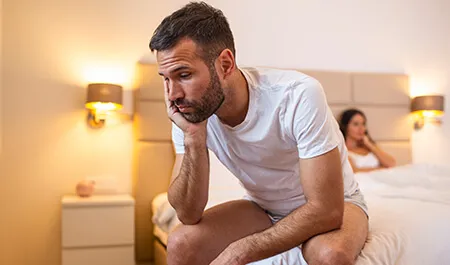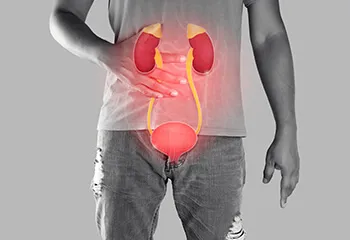Got a Urology Problem? Consult the Best Urologist in Delhi Today
Schedule Consultation
Dr. Ashish Saini - Best Urologist & Andrologist in Delhi
About Dr. Ashish Saini – Best Urologist and Andrologist in Delhi
Dr Ashish Saini is an exceptional and highly skilled genitourinary surgeon(urologist) whose capabilities in the operating room are truly commendable. Dr Ashish Saini did his MBBS, MS from King George Medical College (KGMC), and he completed his M.Ch in Urology from All India Medical Sciences (AIIMS) New Delhi. Known for his meticulous attention to detail, Dr Ashish Saini with 15 + years of experience approaches each surgical case with a thorough understanding of the patient’s unique needs and tailors his approach accordingly. Dr Ashish Saini has completed 21000+ Urology and Sexology Surgeries. Beyond his surgical skills, Dr Saini fosters a sense of trust and reassurance among his patients. His clear communication, both pre-and post-surgery, helps the patient feel informed and at ease throughout their medical journey. Dr Ashish Saini’s commitment to patient-centred care contributes to a positive overall experience for those under his supervision.
Meet Dr. SainiBreaking Records Every Day
Why Dr. Ashish Saini is the Most Trusted Urologist in Delhi NCR
Dr. Ashish Saini has performed an impressive number of surgeries, showcasing his expertise and dedication in the field. With a remarkable track record, he has successfully completed thousands of surgeries, bringing hope and healing to countless patients.
0
Infertility Treatments
0
Erectile Dysfunctions Treatments
0
Laser Kidney Stones Removal Surgery
0
Enlarged Prostate Treatments
Dr Ashish Saini also provides tailored solutions for men's health concerns, ensuring personalized and effective treatments. Restoring confidence and well-being, Dr. Saini is your reliable partner on the path to better health.
Learn More About Andrology Treatment
Contact Dr Saini for Male Health Concerns
Schedule ConsultationUrology & Andrology Treatments Offered at
Excel Advanced Urology Clinic, Delhi
Conditions Treated by the Best Urology Specialist in Delhi
Why Choose Dr Saini for Top Urology & Andrology Treatments in Delhi
Excel Advanced Urology Centre has a specialized team led by senior urologist Dr Ashish Saini who has performed numerous RIRS surgeries that significantly enhance the success rates and safety of the procedure.
Schedule ConsultationFAQ’s on Urology & Andrology
Common questions about urology cost, best doctors, hospitals, and andrology treatments in Delhi
The consultation fee for a urologist in Delhi typically ranges between ₹800 to ₹2,000, depending on the doctor’s experience, hospital/clinic, and location. Dr. Ashish Saini, one of the most trusted urologists in Delhi NCR, offers transparent pricing with affordable and high-quality care. Follow-up consultations may cost less and some clinics offer package-based pricing for diagnostic and treatment procedures.
If you prefer personalized attention with state-of-the-art care, Excel Advanced Urology Center is a top-rated urology clinic in South Delhi with advanced diagnostics and minimally invasive treatments.
While several leading urologists are recognized across India, Dr. Ashish Saini is widely regarded as one of the best urologists in India, especially in North India. With over 15 years of experience, international training, and thousands of successful surgeries, he specializes in kidney stone treatment, prostate surgery, male infertility, and robotic urology procedures.
Andrologists are specialists in male reproductive and urological health. Common conditions treated include:
- Erectile dysfunction (ED)
- Male infertility and low sperm count
- Premature ejaculation
- Hormonal imbalances (like low testosterone)
- Testicular and penile disorders
- Varicocele
- Vasectomy and reversal procedures
Dr. Ashish Saini offers advanced diagnosis and treatment for all andrological issues in Delhi.




















